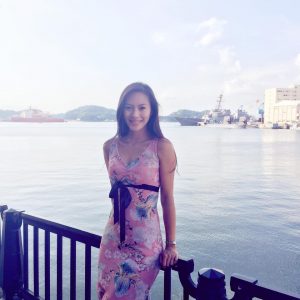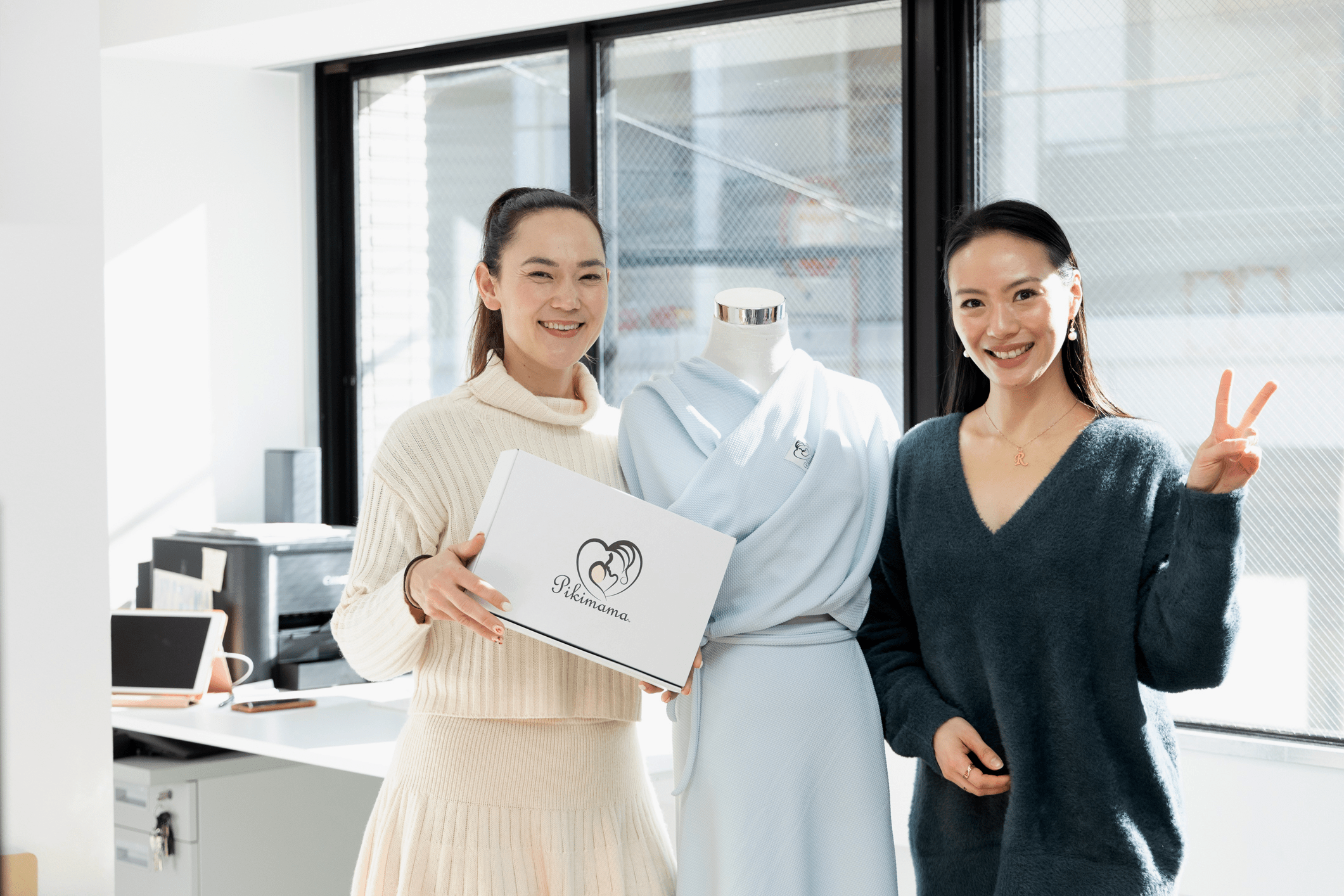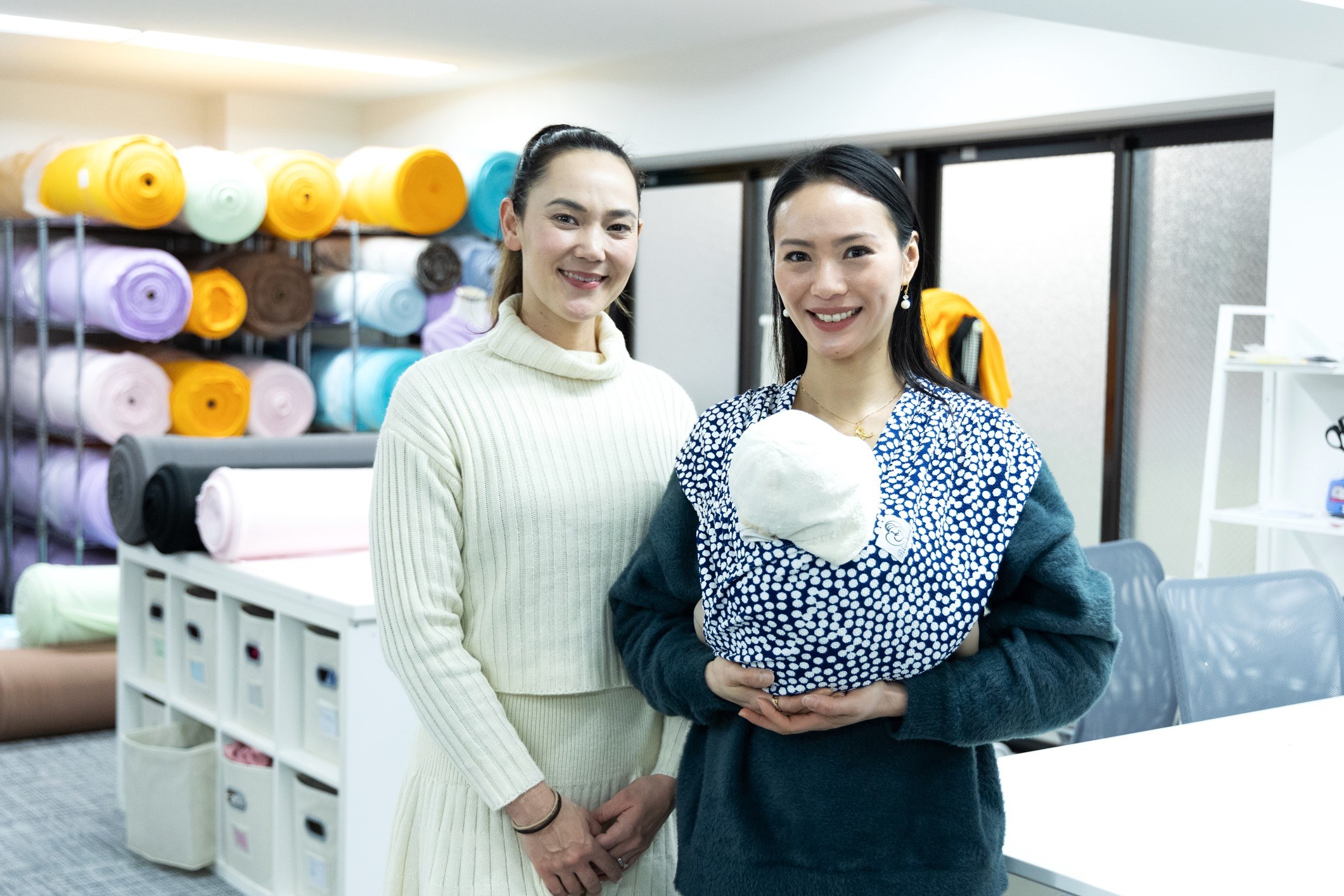Visiting an Oyster Farm in Rikuzentakata City, Iwate Prefecture!
岩手県陸前高田の牡蠣養殖場を訪ねましょう~!
7 seconds.
7秒。
That is how long it takes an oyster farmer to shuck a Pacific oyster. In comparison, the average person will take over a minute. (10 minutes, if at all, in my case!)
それが、カキ養殖業者が真牡蠣(マガキ)をむくのにかかる時間です。
プロと比較すると、普通の人は1分以上がかかります。
(私の場合、仮に10分だとしたら!)
I spent a morning with Ohwada-san on his oyster farm along the coast of Rikuzentakata. If you’re an oyster fan, you’ll want to read on to learn more about how these jewels of the sea are raised and bred!
大和田さんと一緒に陸前高田海岸のカキ養殖場で朝を過ごしました。
カキのファンなら、これらの「海の宝石」がどのようにして育てられるかについて、
続けて読んでください!
| Article Contents || 記事内容 |
|---|
| Visiting the Ohwada Oyster Farm おおわだ牡蠣養殖所を訪ねましょう~! Sailing to the Oyster Farm カキ養殖場へ行きましょう A Traditional Oyster Cultivating Method 従来からの養殖方法 Influence from Australian oyster aquaculture オーストラリアのカキ養殖からの影響 Innovating for The Future 未来のためのイノベーション Returning to the Pier: Oyster Processing 桟橋に戻る:カキ加工 A Taste of Fresh Oyster 新鮮なカキの味 Final Thoughts 最後に… |
*~*~*~*
Ohwada Oyster Farm
おおわだ牡蠣養殖所
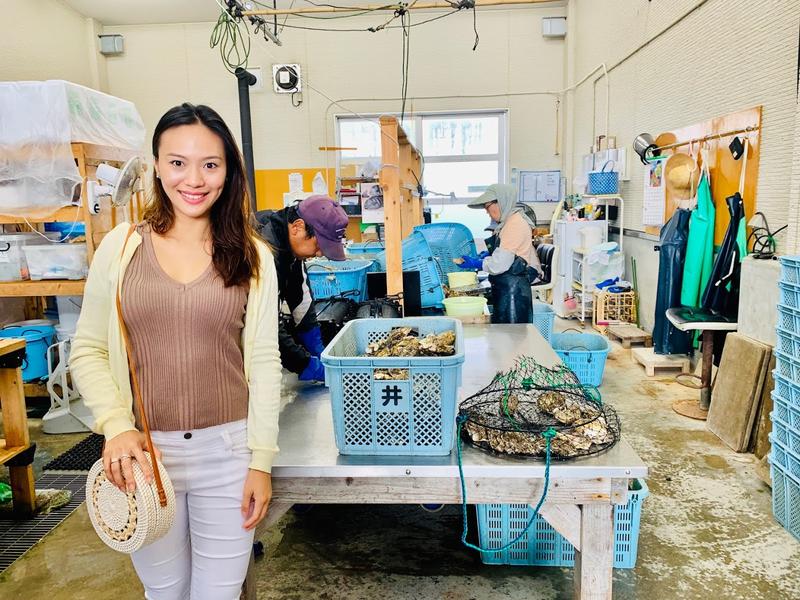
One of the highlights of my trip with the Embassy of Singapore in Tokyo to Rikuzentaka City was the opportunity to meet with the locals and visit the Ohwada Oyster Farm. (Click here to read about my visit to Rikuzentakata City with the Embassy of Singapore in Tokyo!)
去年、私は日本のシンガポール大使館と一緒に陸前高田市に行きました。
その旅のハイライトの1つは、地元の人達と会い、
おおわだカキ牡蠣養殖所を訪問する機会でした。
(シンガポールと陸前高田市がどのように結びついているのか、
そして2011年3月11日以降に街がどのように回復したかを私の直接体験については、
ここをクリックしてご覧ください。)
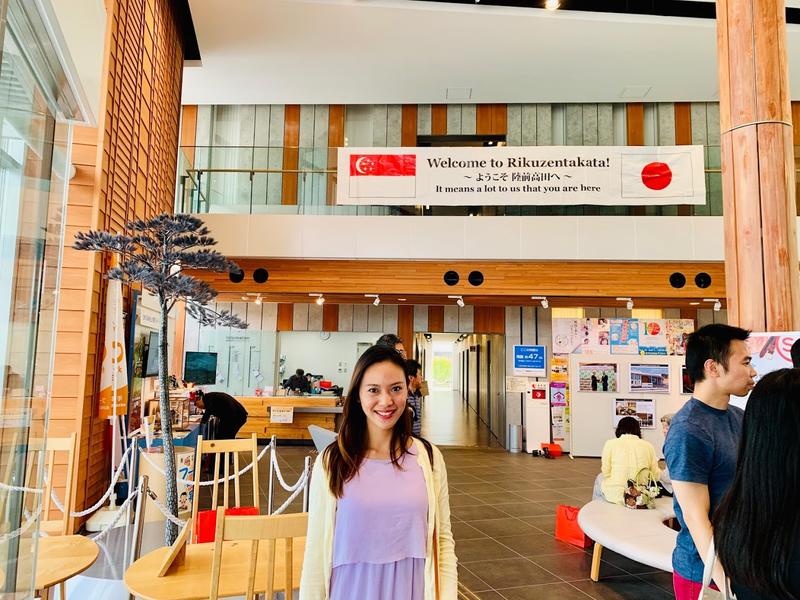
Anyone who knows me well will also know that I love eating oysters! It was my first time to visit an oyster farm, however, and I had never really thought much about oysters were cultivated and harvested before meeting Ohwada-san.
私をよく知っている人なら誰でも、
私がカキを食べるのが大好きだということを知っているでしょう!
牡蠣養殖場に行ったのは初めてで、
大和田さんに会う前に牡蠣を養殖することについてあまり考えたことはありませんでした。
| Did You Know? Oyster farming is an aquaculture (or mariculture) practice in which oysters are bred and raised mainly for their pearls, shells, and inner organ tissue, which is eaten. Oyster farming was practiced by the ancient Romans as early as the 1st century BC on the Italian peninsula and later in Britain for export to Rome! The French oyster industry has relied on aquacultured oysters since the late 18th century. *** ご存知でしょうか? カキの養殖は水産養殖が常であり、主に真珠部分、 殻、私達が食べる食物として育っています。 牡蠣の養殖は、紀元前1世紀にはイタリア半島で、 後にイギリスでローマへの輸出のために 古代ローマ人によって行われていました! フランスのカキ産業は、 18世紀後半から養殖カキに依存してきました。 |
Oyster production and consumption has a long history and is well known in Japan. Consumed since the Jomon period (ca. 10,500 – ca. 300 B.C.), Pacific oysters, which are in season in winter, and Iwagaki oysters, which are popular in summer, are two representative types of oyster in the country. It is estimated that there are 13-30 species of oysters along the coast of Japan, but the exact number is unknown. Japanese people typically eat oysters fried in oil after coating them with flour and breadcrumbs (“kaki fry”), or warm up in winter with an oyster hotpot (“kaki nabe”).
カキの生産と消費には長い歴史があり、日本ではよく知られています。
縄文時代(紀元前10500年〜300年頃)以降に消費されました。
冬の季節である太平洋のカキと夏に人気のある岩カキは、国内の代表的な2種類のカキです。
日本沿岸には13〜30種のカキがいると推定されていますが、正確な数は不明です。
日本人は通常、「カキフライ」を食べるか、冬には「カキ鍋」で体を暖めますね。
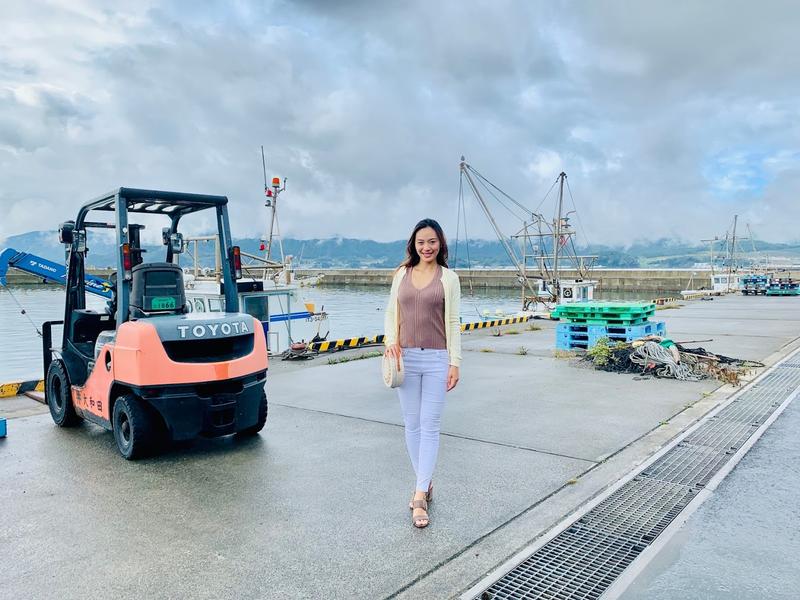
漁船に乗る前の桟橋。
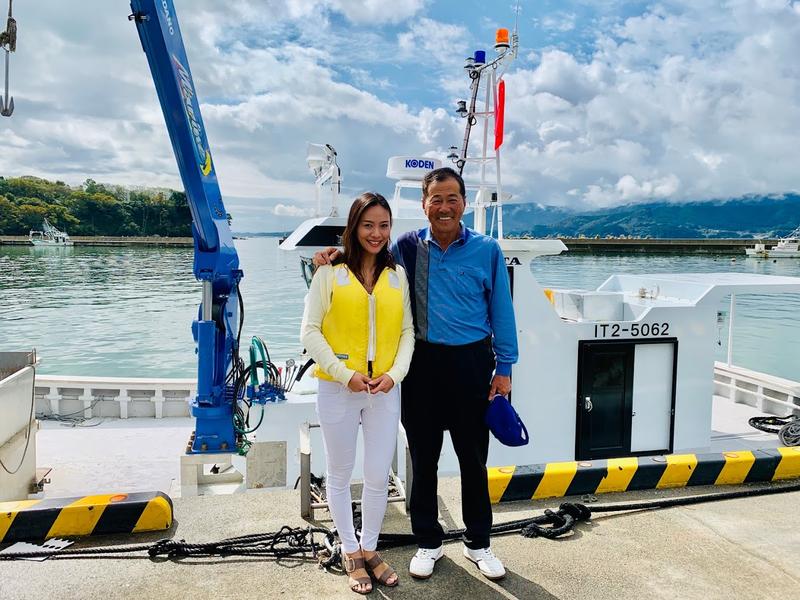
大和田さんと釣り船の前での写真。
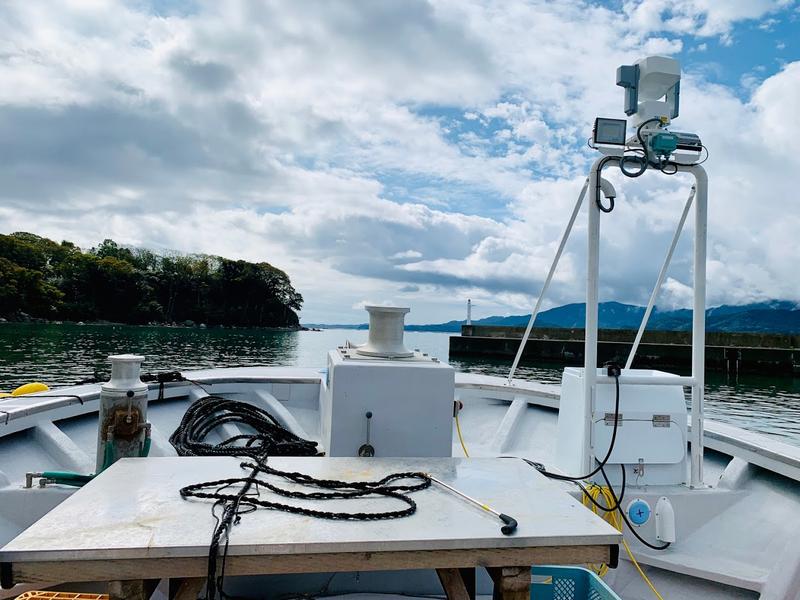
Ohwada-san’s fishing boat was a lot larger and more high-tech then I had expected!
A group of us boarded and sailed out to his oyster farm.
大和田さんの釣り船は思ったよりずっと大きくてハイテクでした!
私たちのグループが搭乗し、彼のカキ養殖場に行きました。
*~*~*~*
Sailing to the Oyster Farm
カキ養殖場へ行きましょう
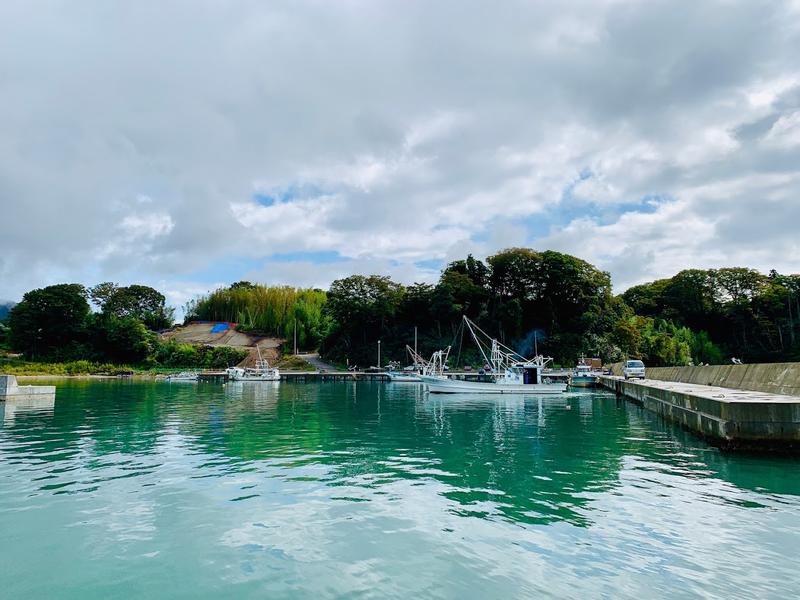
Along the way, we passed by the breakwater that was rebuilt after it was damaged in the March 11, 2011 disaster. The earthquake and tsunami, which reached as high as 30 metres in some areas, killed nearly 18,000 people across Japan and triggered a nuclear meltdown at the Fukushima power plant. Rikuzentaka was one of the hardest tsunami-hit areas.
(Click here for my blog article on a Fukushima Disaster Tour!)
途中、2011年3月11日の災害で損傷した後に再建された防波堤を通過しました。
一部の地域で30メートルにも及ぶ地震と津波は、日本全国で約18,000人の死者を出し、
福島発電所の核溶解を引き起こしました。
陸前高田は津波の被害が最も大きかった地域の1つでした。
(福島災害ツアーについてのブログ記事はここをクリックしてご覧ください!)

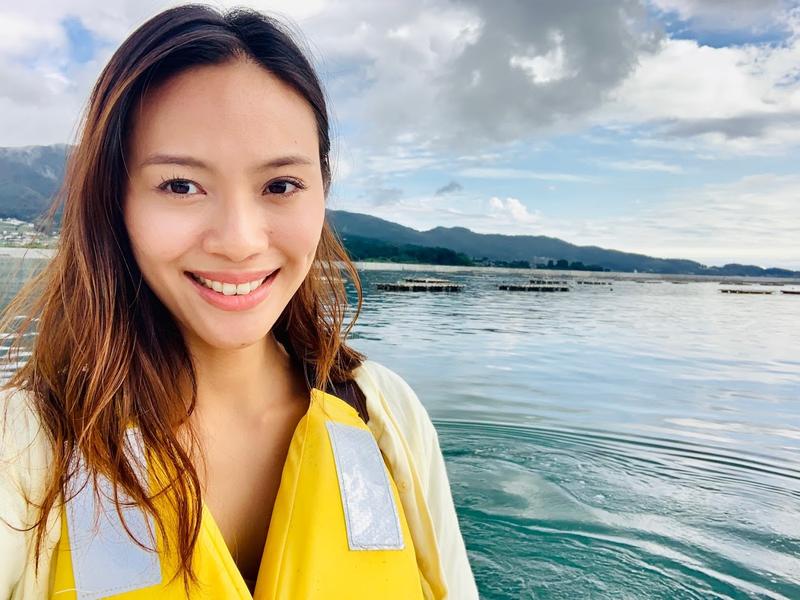
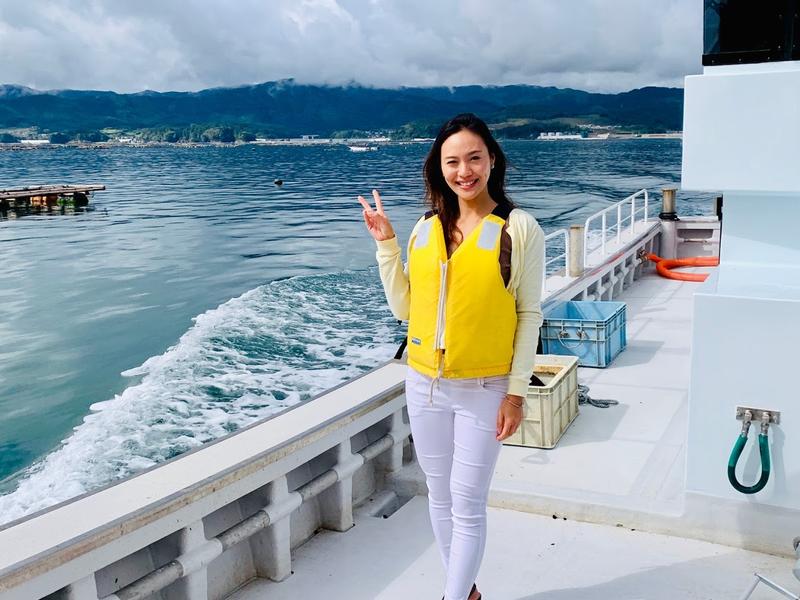
カキ養殖場へ近付きながら、太陽と潮風を楽しみましょう!
*~*~*~*
A Traditional Oyster Cultivating Method
従来からの養殖方法
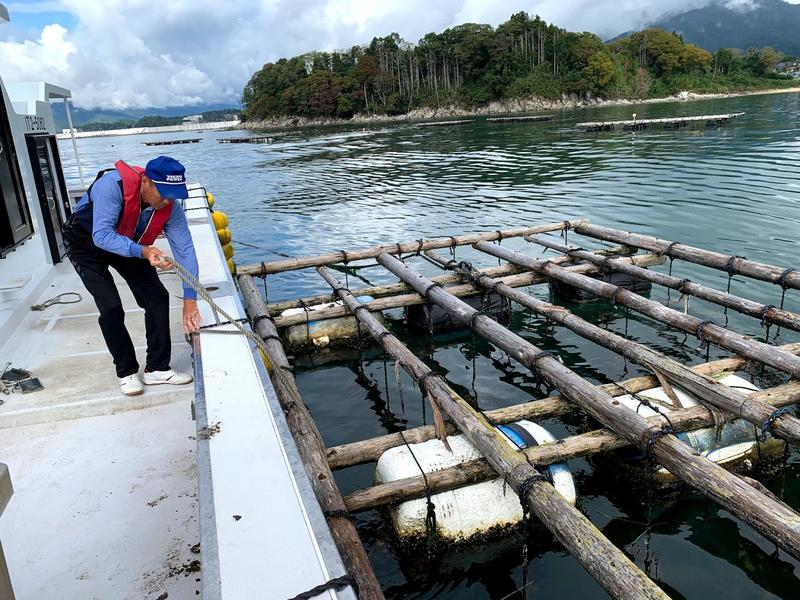
We were able to get up close to the raft platforms used to cultivate oysters on the boat.
船で牡蠣を養殖するためのいかだ乗り場に近づくことができました。
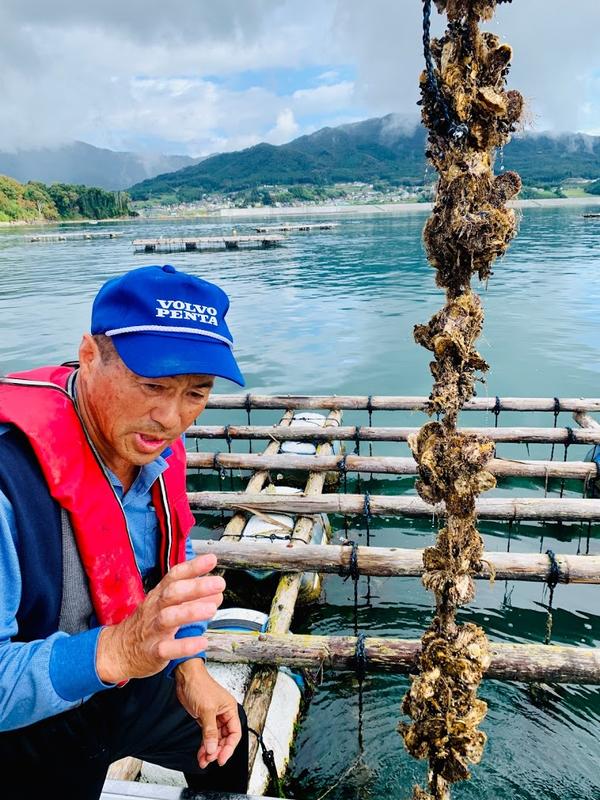
Ohwada-san explains to us his techniques for cultivating oysters.
The traditional method, what he calls the “clutch style”, where about 16 to 22 pieces of cultivated scallop shell attached to a clutch (oyster shells, etc.) are put on a rope of about 8 m, and about 150 pieces are drooped at each raft.
大和田さんがカキの養殖技術を教えてくれました。
従来からの養殖方法「カルチ式」と呼ばれるホタテ貝殻にカキを付着させたものを8m程度のロープに16~22枚くらい挟み、それを一つの場所で約150本ほど吊り下げています。
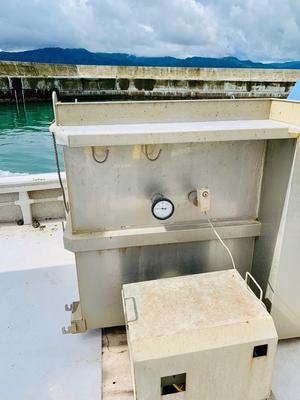
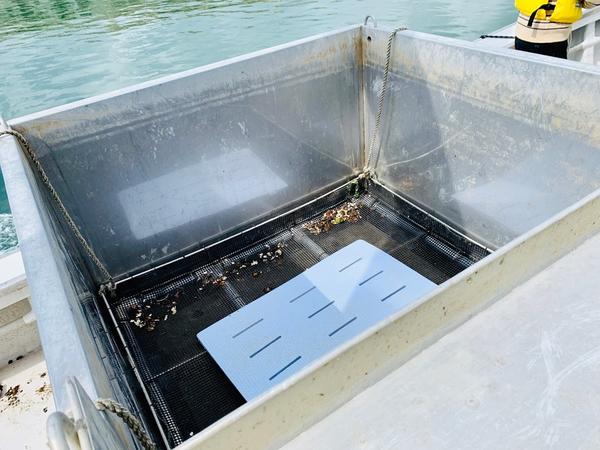
These tanks on the fishing boat are used to Blanche the oysters every summer.
漁船のこれらのタンクは、毎年夏にカキをしっかりと湯通しするために使用されています。
From the end of July to September, all shells are blanched in hot water at around 70 °C. This kills off foreign matters such as mussels, barnacles and sponges that compete with the oysters for space and nutrients. Unlike other oyster farms, Ohwada-san thoroughly blanches all of his oysters, not just the oysters that are ready to be shipped out. To him, this intensive work is worth it, when he sees his oysters nurtured to full size.
This traditional oyster farming method has been passed down for generations, and is now recognized in the industry as the Yonezaki oyster brand.
また、7月末~9月にかけて、
温湯処理という牡蠣を70℃前後のお湯に通し、
ムール貝やフジツボや海綿体などの雑物を除去します。
これにより、カキと空間や栄養素を奪い合う異物を殺します。
他のカキ養殖場とは異なり、大和田さんは出荷可能なカキだけでなく、
すべてのカキをしっかりと湯通しすることで、
他の雑物に栄養を取られずに、大きくて美味しい牡蠣を育成しています。
これらは、先代・先々代の漁師が試行錯誤を繰り返し、
現在の規格や育成方法を構築し、
市場で高い評価をいただく米崎牡蠣ブランドとして確立しています。
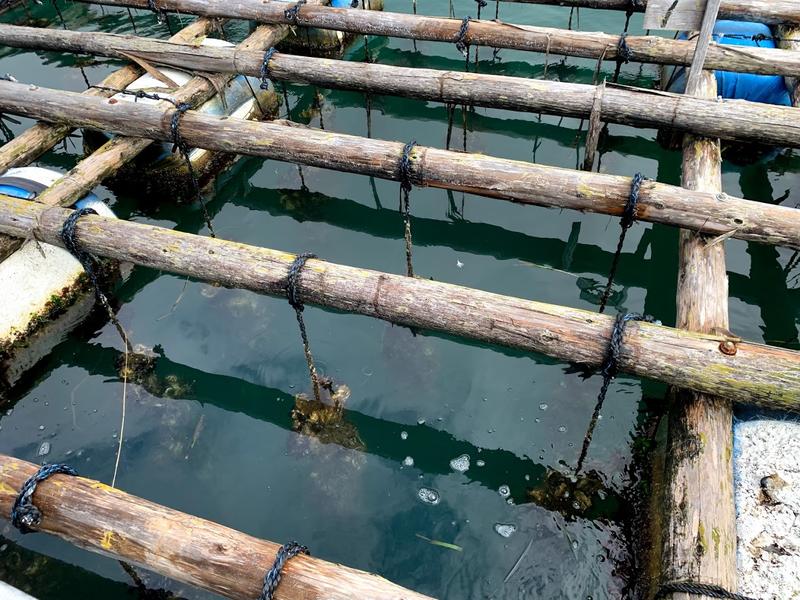
The standard and number of droops on each oyster raft are strictly controlled to prevent overcrowding.
過密養殖対策として、筏の規格や吊り下げる数を厳密に取り決めています。
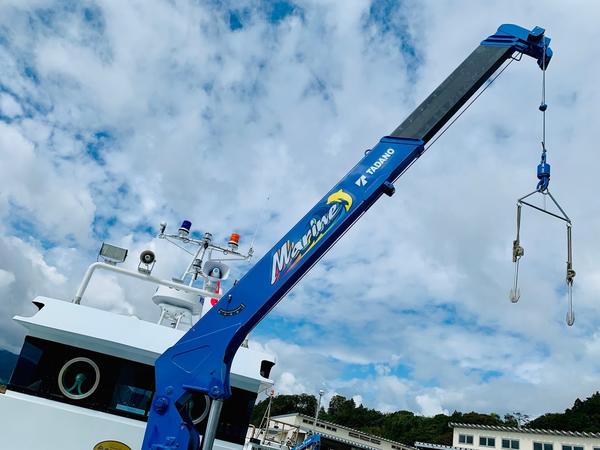
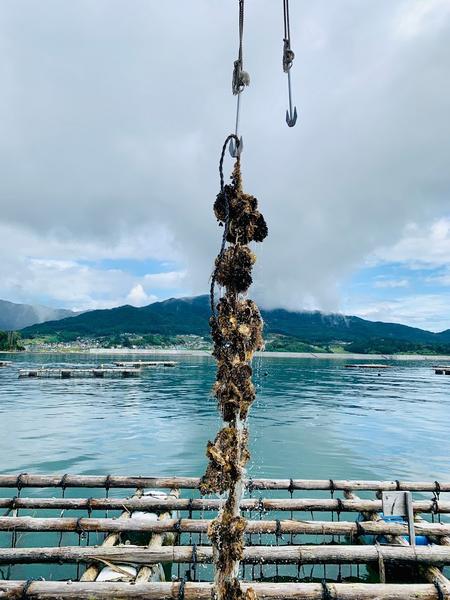
Ohwada-san uses the fishing boat crane to bring up some of the droops above water so we can get a closer look at the oysters.
大和田さんは、漁船のクレーンを使って水面に吊り下がった部分を引き上げ、
カキを詳しく観察できるようにします。
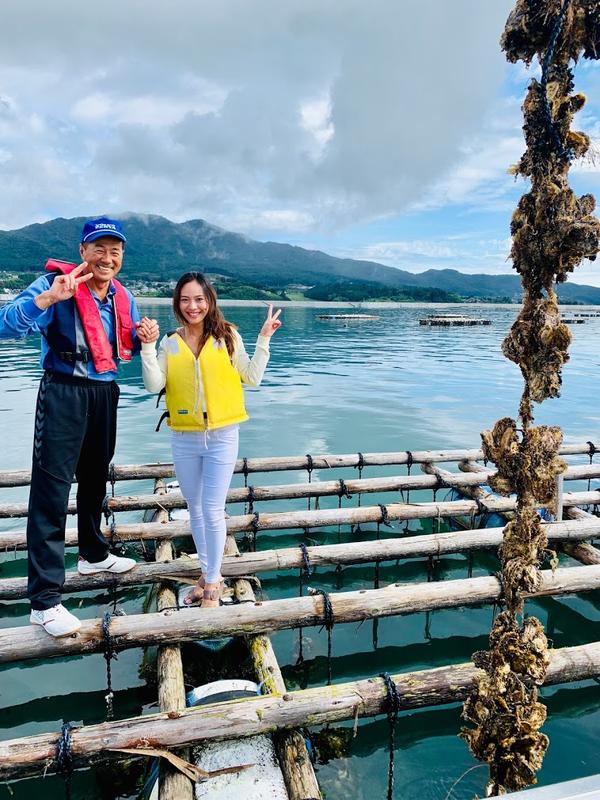
Stepping out on the oyster platform with Ohwada-san!
大和田さんと一緒に牡蠣の台に飛び出そう!

Ohwada-san explains the anatomy of an oyster, and points out the oyster’s heart.
大和田さんはカキを解剖し、カキの心臓を指で示します。
*~*~*~*
Influence from Australian oyster aquaculture
オーストラリアのカキ養殖からの影響
Ohwada-san admits that traditional oyster farming techniques and expertise are not sufficient in modern times. Oyster farmers there have been turning to Australian expertise in an effort to rebuild their industries, especially those regions hit by the March 2011 earthquake and tsunami.
大和田さんは、伝統的なカキ養殖技術と専門知識は現代では十分ではないことを認めています。
カキ養殖業者は、特に2011年3月の地震と津波に襲われた地域の産業を再建するために、
オーストラリアの専門知識を活用しています。
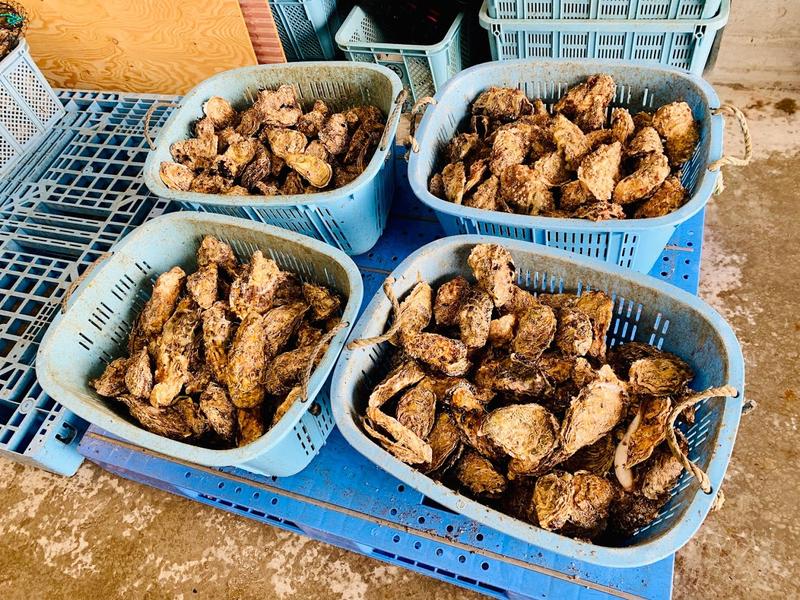
The traditional method is able to efficiently mass-produce oysters within two years, but it proved challenging for Japanese fishermen to grow oysters with nice shells for raw consumption. Moreover, the work of removing barnacles from oyster shells is hard labor. Australian-style oyster cultivation methods use baskets which help oysters grow faster with uniform, clean shells.
伝統的な方法では、2年以内にカキを効率的に大量生産できますが、日本の漁師が生食用の殻のあるカキを育てるのは難しいことがわかりました。 さらに、カキ殻からフジツボを取り除く作業は大変な労力です。 オーストラリア式のカキの養殖方法は、カキを均一できれいな殻で育てるのに役立つバスケットを使用しています。
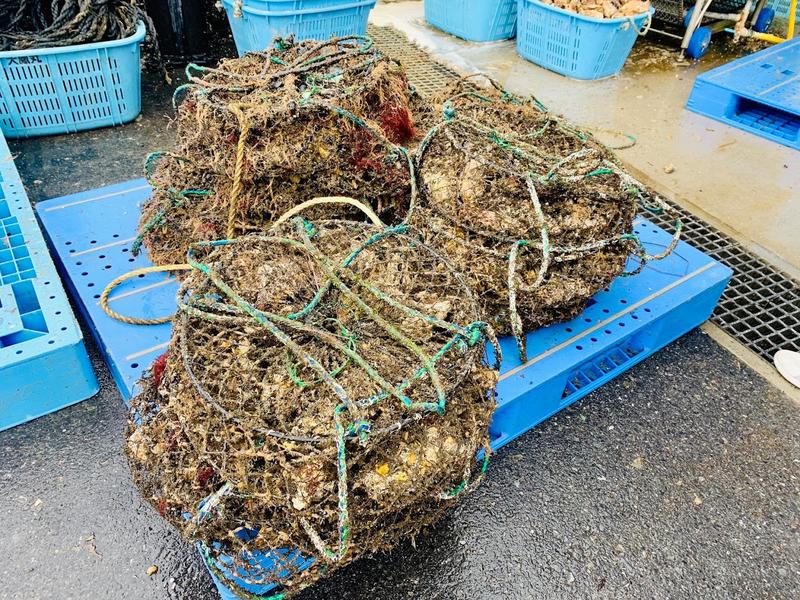
かごの中のカキ
*~*~*~*
The Oyster’s Influence on The World:
An eye-opening record of the oyster’s role in cooking, art, literature, and politics
*~*~*~*
Innovating for The Future
未来のためのイノベーション
Ohwada-san’s passion for his industry shines through when he talks about making oyster farming more accessible, especially for the youth. He believes rural areas in Japan need innovation, because populations are decreasing and young people no longer want to continue the work their grandparents started. Whereas other farmers may be reluctant to try new techniques because of their conservative values, one of Ohwada-san’s goals is to embrace innovation to boost the declining industry.
One way in which he actively does this is by hosting volunteers to gather new ideas, and he even has a program working with local schools for students to come in and build their own oyster raft platform.
大和田さんの業界への情熱は、カキの養殖を、
特に若者にとってより身近なものにすることについて語るときに感じられます。
日本では若年層人口が減少しており、若者は祖父母が始めた仕事を継ぎたくないないので、
彼は日本の農村地域がイノベーションを必要としていると信じています。
他の農家は保守的であるため、新しい手法を試すことに消極的かもしれませんが、
大和田さんの目標の1つは、衰退している業界を後押しするイノベーションを受け入れることです。
彼が積極的にこれを行う1つの方法は、
新しいアイデアを集めるためにボランティアを募集することであり、
彼は地元の学校と協力して、生徒たちが自分のカキ筏のプラットフォームを作り、
構築するプログラムを持っています。
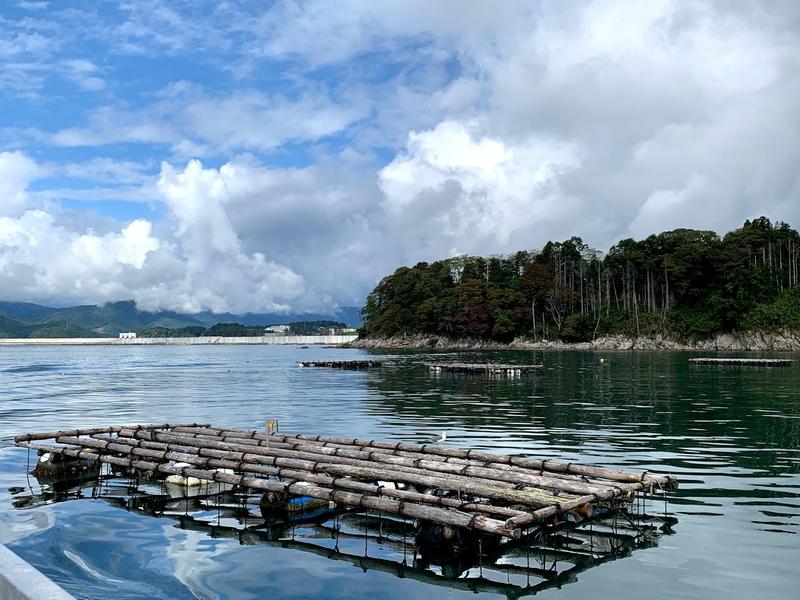
Ohwada-san shows us an oyster raft that was built and is tended to by students from a local school. Students can cultivate their own oysters throughout the year and bring them home with them at the end of the harvest season.
大和田さんは、地元の学校の生徒が作ったカキ筏を見せてくれました。
生徒たちは自分のカキを一年中養殖し、
収穫期間の終わりに家に持ち帰ることができます。
The number of existing fishermen is declining year by year, and unless the younger generation take up oyster farming, valuable techniques will be lost. Ohwada-san personally believes that it is necessary to innovate for greater accessibility to oyster farming. Whereas the traditional clutch-style of oyster cultivation generally requires a large fishing boat (over 3 tons) with substantial financial investment, Australian-style basket farming can be successfully tended to by even small Japanese vessels (less than 1 ton).
Ohwada-san believes that adopting Australian oyster aquaculture will make it possible for small-scale entrants by reducing the amount of upfront investment necessary.
現存する漁師の数は年々減少しており、若い世代がカキ養殖を始めない限り、
貴重な技術は失われていきます。
大和田さんは個人的に、
カキ養殖へ参入しやすい環境づくりのためにイノベーションする必要があると信じています。
伝統的なカルチ式のカキ養殖では、
一般に大きな投資が必要な大型漁船(3トン以上)が必要ですが、
オーストラリア式のかご養殖は、日本の小型船(1トン未満)でも成功ことができます。
大和田さんは、オーストラリアのカキ養殖を採用することで、
必要な先行投資額を削減することが、
小規模の参入者が可能になると考えています。
*~*~*~*
Returning to the Pier: Oyster Processing
桟橋に戻る:カキ加工
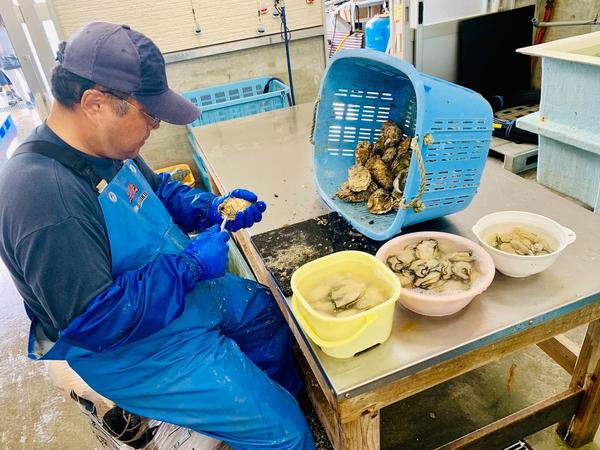
After a tour of the oyster farms, we return to the pier and observe fishermen and other staff shucking and preparing oysters to be shipped off and sold.
牡蠣養殖場を見学した後、桟橋に戻り、
漁師をはじめとするスタッフが牡蠣の殻を剥き、
出荷する様子を見学しました。
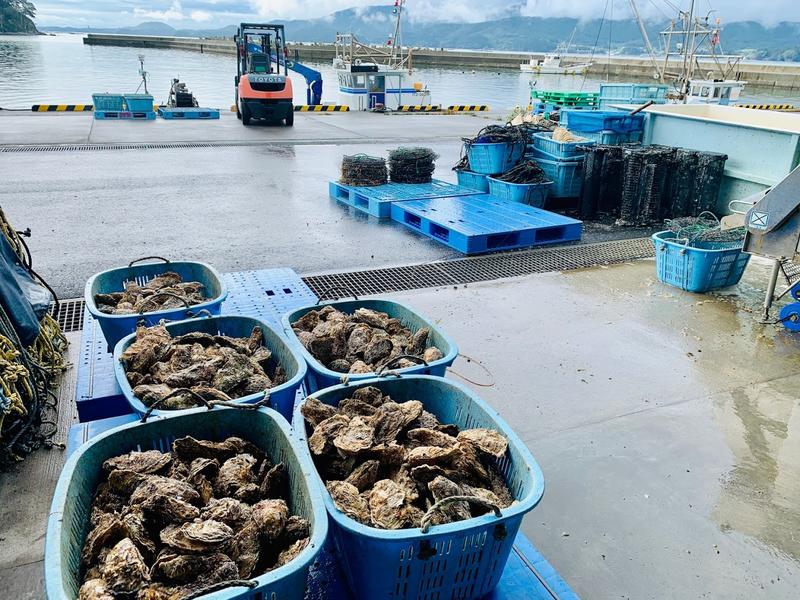
Buckets of oysters in line to be shucked
殻をむく前のカキ
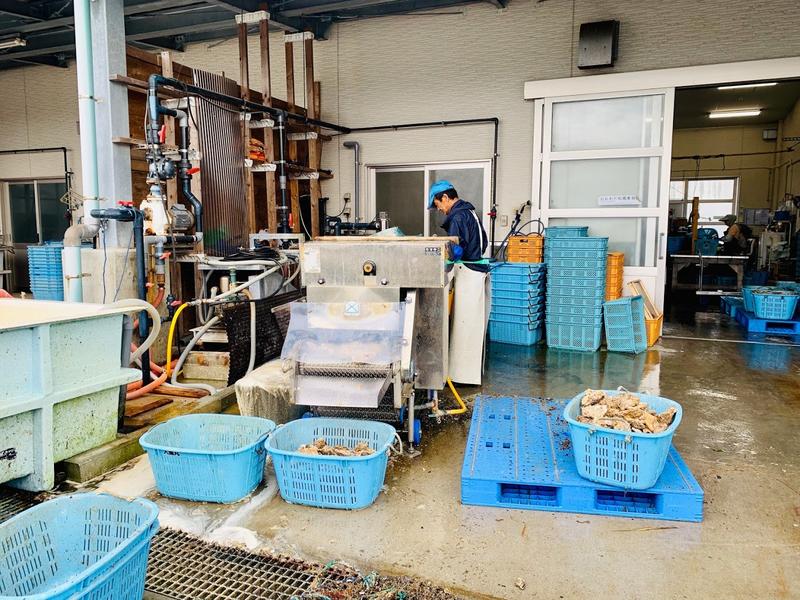
Did you know that oysters take 2-3 years to grow to harvest size and that it only takes an oyster professional 7 seconds to shuck the tough Pacific oyster??
カキを収穫するまでに2〜3年かかること、
そしてカキ専門家が丈夫な真牡蠣を殻から剥がすのに7秒しかかからないことをご存知ですか?
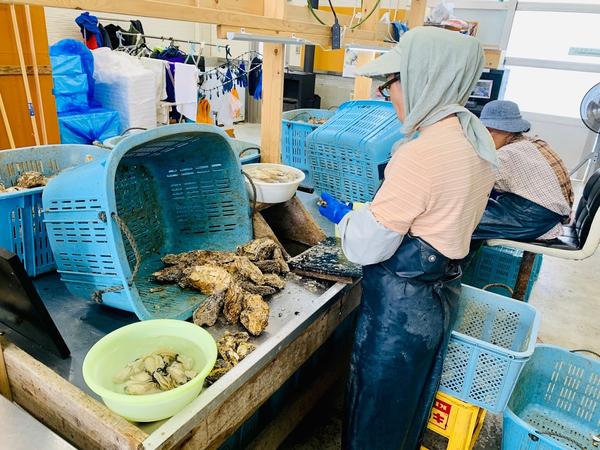
Fishermen and oyster farm staff shucking oysters at incredible speeds!
漁師とカキ養殖場のスタッフがカキを驚くべき速さで殻打ちします!
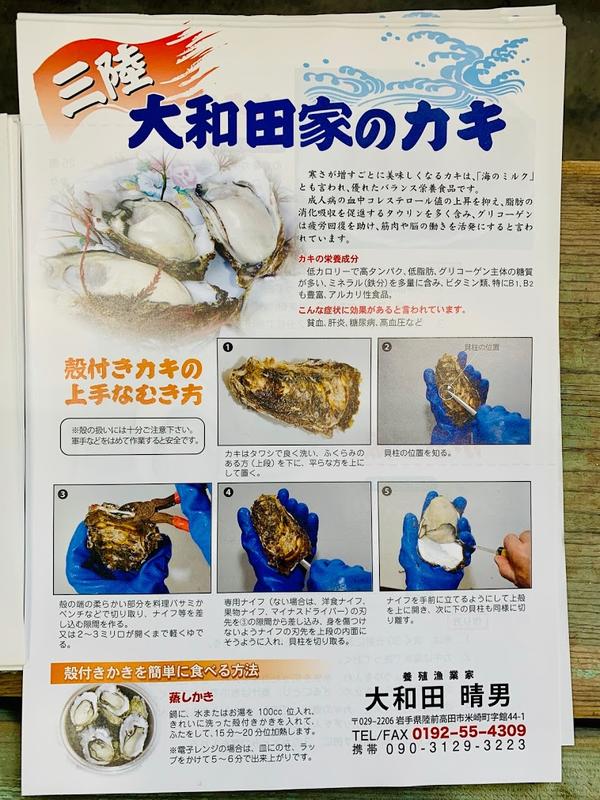
Instructions on how to shuck an oyster
殻付きカキの上手なむき方
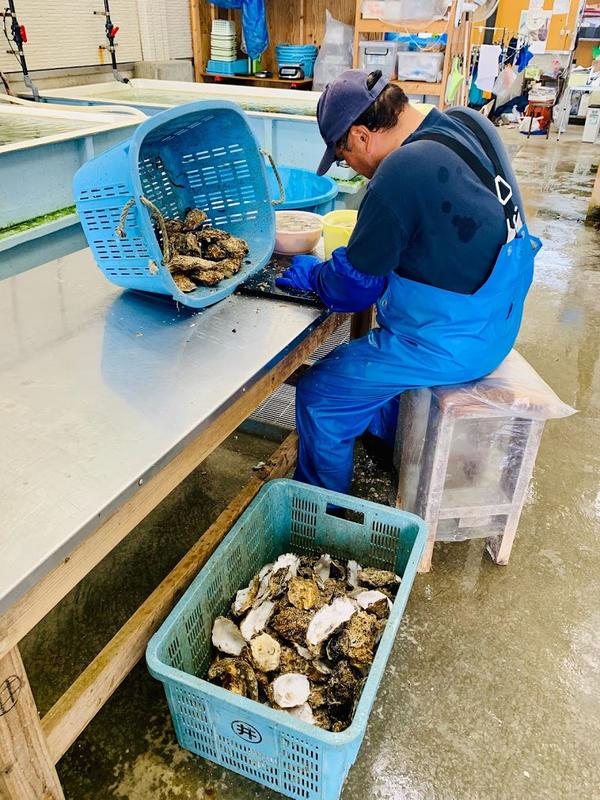
It is amazing how quickly the professionals can shuck an oyster!
専門家がカキをどれほど早く殻から剥がせるかは驚くべきことですよ!
When I tried doing it myself, it took me over 10 minutes and much frustration!
自分でやってみたところ、10分以上かかったことが欲求不満でした!
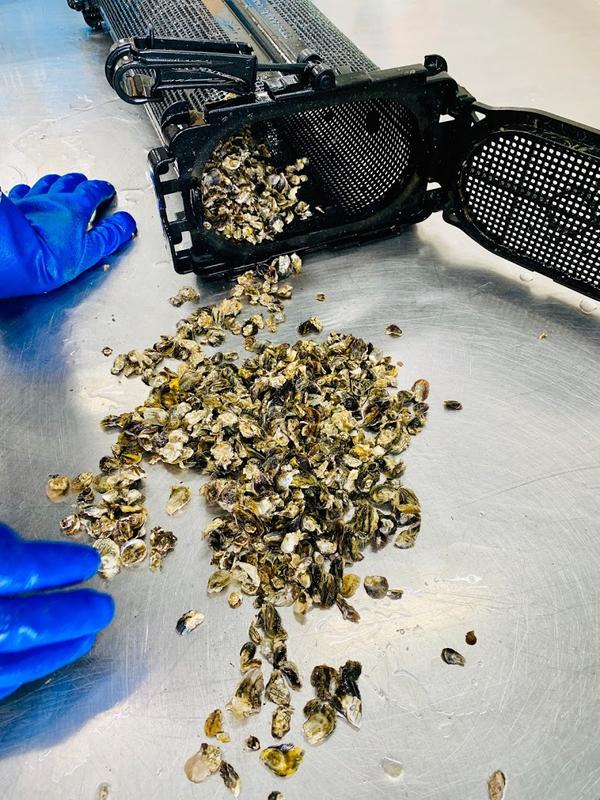
A fisherman shows me baby oysters that will be used to cultivate the next batch of oysters.
漁師は、次のカキを養殖するために使用されるカキの赤ちゃんを見せてくれました。
*~*~*~*
A Taste of Fresh Oyster
新鮮なカキの味
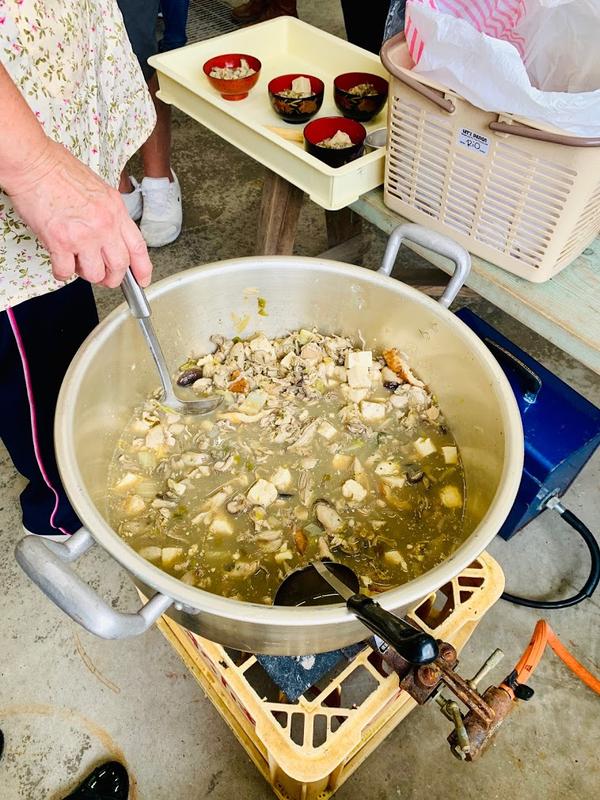
At the end of the tour, we were treated to a delicious bowl of oyster nabe freshly made by Ohwada-san’s wife!
ツアーの最後には、大和田さんの奥さんの作りたての
おいしい牡蠣鍋をいただきました!
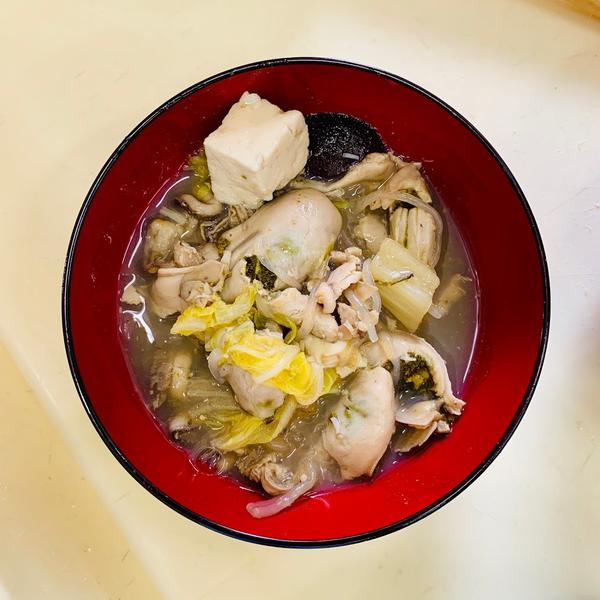
The taste of fresh oyster was absolutely delicious!
生牡蠣の味がとっても美味しかったです!
I was really surprised to learn than Japan is one of the largest oyster producers worldwide (China is the largest, with over 80% of global production). According to Japan’s Ministry of Agriculture, Forestry and Fisheries, Japan produces around 200,000 metric tons in-shell weight or 34,000MT of meats per year. These figures make Japan’s production volume double that of the U.S. and Australia! (National Marine Fisheries Service statistics show that the US produced nearly 15,800MT of meats as of 2012 and Australia over 15,300MT.)
日本が世界最大のカキ生産国の1つであることを知って本当に驚きました。
(ちなみに、中国が最大で、世界の生産量の80%を超える!)
日本の農林水産省によれば、
日本は年間約20万トンの殻付き重量または34,000トンのカキの中身を生産しています。
これらの数字により、日本の生産量は米国とオーストラリアの2倍になりますよ!
(ところで、国立海洋漁業局の統計によると、
米国は毎年約15,800トン、オーストラリアは15,300トン以上のカキの中身を生産していた。)

Ohwada-san sells his carefully cultivated Iwate rock oysters at an average price of 180 yen per piece (retail price is usually over 500 yen!). Of course, final prices will vary by size of the oyster. People all around Japan can order directly from their website, or even through furusato nozei (hometown tax)!
大和田さんは厳選された岩手産の牡蠣を1個平均180円で販売しています。
安いでしょう?! もちろん、最終的な価格はカキの大きさによって異なります。
陸前高田市から全国に広田湾米崎産の美味しい牡蠣を直送していますよ!
おおわだ牡蠣養殖所のホームページから、またはふるさと納税からもご注文いただけます!
*~*~*~*
Final Thoughts
最後に…
It was a truly eye-opening experience for me to visit Ohwada-san’s oyster farm and learn more about oyster cultivation. I never knew that there were so many different methods to grow different species of oysters! Even the localized industries of oyster farming cannot neglect the effects of globalization, having to fuse various international methods to optimize oyster cultivation to meet demand and innovate to support a declining industry.
I was very charmed by Ohwada-san’s energy, passion, and vitality! He is an inspiration in the way he is able to embrace new ideas for positive change and in his tireless efforts to make oyster farming more accessible to the younger generation. I truly hope he keeps up the awesome work!
大和田さんのカキ養殖所を訪れ、カキ養殖についてたくさん学ぶことは、
本当に目を見張るような経験でした。
様々な種類のカキを育てる方法がこれほどたくさんあるとは知りませんでした!
カキ養殖の局地的な産業でさえ、グローバリゼーションの影響を無視することはできず、
需要を満たすためにカキの養殖を最適化し、衰退する産業をサポートし、
イノベーションするために、色々な国際的な方法を融合する必要がありますよね。
大和田さんの元気さ、情熱、活力にとても魅了されました!
彼は前向きな変化のための新しいアイデアを受け入れることができる方法と、
若者がカキ養殖により参加しやすくするためのたゆまぬ努力や行動はインスパイアされます。
大和田さんが素晴らしい仕事を続けてくれることを本当に望みます!
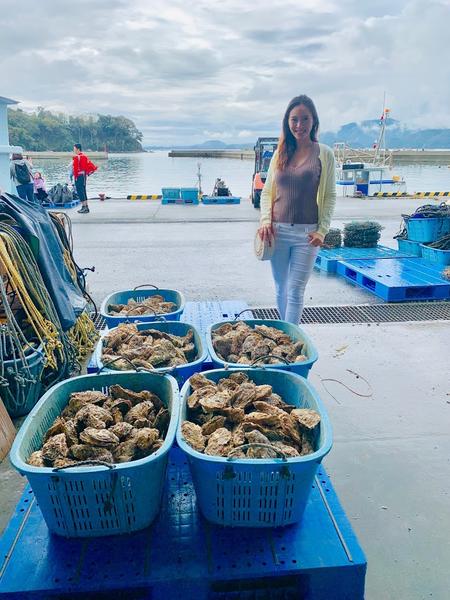
Thank you for reading. I would love to hear from you.
Please do send me an email or subscribe for emails from me right to your inbox!
本日も読んでいただきありがとうございます。
私からのメールを是非購読してくださいね~
皆さんの声を聞かせてください!
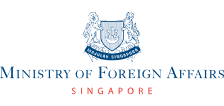
This trip to Rikuzentakata in Iwate Prefecture was made possible with the generous support of the Embassy of Singapore in Tokyo.


